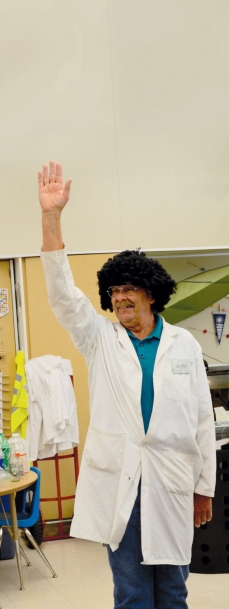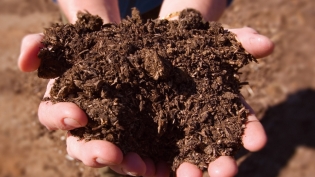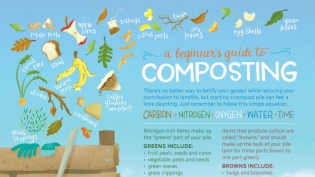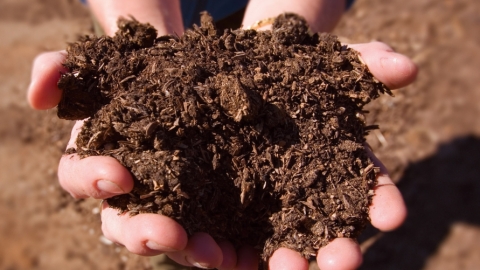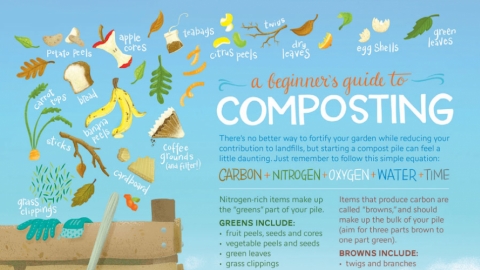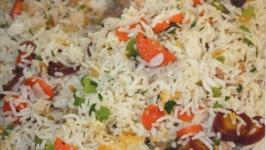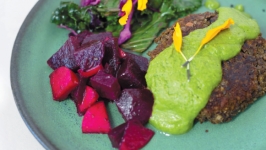Compost Educator: Into The Bin With Dr. Rot
Compost educator hanging up his playful persona
With a colorful fuzzy wig, a lab coat and a wiggling worm, Dr. Rot playfully grabs the attention of third graders throughout Ventura to drive home the serious message of composting.
“I capture their brains at the start,” says Paul Vaksvik, who is an outdoor interpretive specialist with the City of Ventura’s Green Schools program. “The kids ask, ‘Why do you wear that wig?’ I tell them that if I came in and started talking they’d tune me out in a second. I ask them simple questions that I know they all know and they want to answer. Once you get them involved, they’re yours. When they’re laughing, you can pour stuff in their ears.”
Vaksvik is retiring in June after 22 years of heading up the composting program that is offered to third graders throughout the Ventura Unified School District.
“I’ve been doing work for the city for 30 years. And I’ve been doing this program for 22 years. It’s just time,” Vaksvik says. “It takes a lot of energy. But it’s for the kids, and we have a good time. They learn. I make it a positive experience. I put a smile on their faces, and they remember that guy.”
The fast-paced lesson starts when kids file into the classroom to find a mad scientist character bouncing around. “When the kids come in, I have my magnifying glass, and I give their heads a once over. I discreetly take a live worm from my pocket and pull that from somebody’s ear, which tells the kids, ‘This guy’s crazy and up to something.’ I then tell them a little story about how when I was a kid, I was jumping into a mud puddle when I splashed up a worm. It became my pet, but my mom wouldn’t let me keep the worm. So my neighbor let me keep it in a compost bin. Then we talk about compost and recycling,” he says.
According to Brandon Kaysen, environmental specialist for the City of Ventura, who heads up the Green Schools program, the Dr. Rot program is an important part of the educational efforts to teach young people about the environment. Kaysen says the Environmental Sustainability Division offers a series of programs for school-age children, as does the city’s water department. While the water program focuses on water conservation and technology for water, the environmental sustainability program covers everything else, from litter prevention to renewable energy.
“We may do other presentations and call them Dr. Rot, but they won’t be the same. They will focus on composting and vermicomposting, but they won’t quite be the same things,” Kaysen says. “There is no way we could do Dr. Rot the same way Paul does it. He brings so much of his personality to his presentation. The way he interacts with the students, his enthusiasm for the subject and his deep understanding of the subject material is very special. It is unlikely that we will be able to find another Dr. Rot out there.”
Although he presents his message in a fun, accessible way, Vaksvik says he considers composting to be an important part of a comprehensive recycling program. He was asked to start the program because there was no one else who had composting experience.
“I grew up Indiana, in a small town. Everyone had a garden, and we had a house with a pretty good lot. We always composted. Every place we lived, we had a garden— tomatoes, squash, green beans. I learned from my dad,” Vaksvik says. “When I came out here nobody knew how to do compost, so all of a sudden I’m a compost guy. It’s been a really good thing for the community and for me.”
Over the years, school kids have become more familiar with the principles of recycling. “When I first did it, it was the only environmental program that the city had. We used it to educate the youngsters on how and what to recycle. I asked who recycled and I’d get two kids out of 30. Now, these students have been recycling all their lives so it’s more of a review. Compost is not so widespread, but it’s growing. Every year there are few more and a few more kids who do it,” Vaksvik says. “Food’s expensive. Grow your own. You save money and it’s fun. You can go out and pick tomatoes and cucumbers. It’s fresh. It tastes good and it gives satisfaction in life.”
The Dr. Rot program has been a long-running answer to a problem that’s coming to the forefront—food waste, says Jill Santos, who was recently named FOOD Share’s director of food sourcing. Santos helped coordinate the Dr. Rot program in local schools to address food waste when she worked for the City of Ventura’s Environmental Sustainability Division and has been studying the issue for years.
She offers the following statistics:
• According to the Natural Resources Defense Council 2017 report, Americans are throwing away close to half of their average daily calories.
• Food waste in the U.S. represents:
• 1,250 calories per person per day
• 21% of landfills
• 21% of all agriculture water
• 2.6% of all greenhouse gases from automobiles
• 19% of all U.S. croplands


